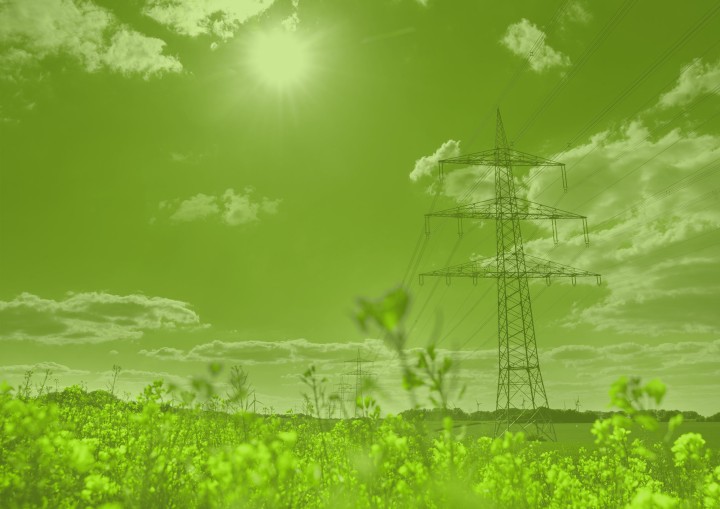Money for the energy transition

Massive investments are needed to make Germany and Europe climate-neutral. Sustainable finance is the answer here because it ensures that funds are channelled into sustainable projects. Three questions to Alexandra Themistocli (Head of Sustainability at SEB in Germany) and Patrick Wang (Head of Investor Relations at Amprion) on the role of sustainable finance in the transformation of the economy.
Europe intends to become climate-neutral by 2050 – a project that will require huge financial resources. How can sustainable finance help here?
ALEXANDRA THEMISTOCLI The past year in particular has shown that we need far more wind and solar energy plus the infrastructure to transport it. Substantial investments will be necessary – with huge potential for sustainable finance. I’m glad that politicians have come to this same recognition. The EU’s revised Renewable Energy Directive will open up new opportunities for funding. The European Central Bank is also providing fresh impetus by focusing more on sustainable enterprises.
What opportunities does sustainable finance offer for Amprion?
PATRICK WANG Our business model paves the way for the energy system to decarbonise. Sustainable finance will make sure that money is used for precisely that purpose. With advantages for Amprion projects as well as for investors. Sustainable investments are not only good for energy transition; there are interest benefits too. Sustainable is the new normal – and it’s an idea that’s also gaining ground in the capital market.
The step into the green capital market is not something we can take for granted. Sustainability needs to be approached strategically and with strong motivation.

What are the principal requirements for enterprises when it comes to sustainable finance?
AT The step into the green capital market is not something we can take for granted. Sustainability needs to be approached strategically and with strong motivation: companies must identify the key issues and translate the strategy into concrete, science-based targets such as those defined by the Science Based Targets initiative. At the same time, questions of responsibility need to be clarified, for example the involvement of different departments and the incentives for the Management Board. This strategic foundation is decisive for establishing a Green Finance Framework – a set of rules for issuing sustainable financial products.
What ultimately persuaded Amprion to issue its own sustainable financial products?
PW Sustainable finance is an opportunity for us to meet the rapidly growing need for investments. The massive demand for our first Green Bond confirms this. The bond is one example of how we tie financing to sustainability aspects – today and in the future. We established the basis for this with the Green Finance Framework, which is the outcome of intensive engagement with our business – and close collaboration with external partners. It’s a starting point for us to further expand our involvement in the capital market and to anchor sustainability as a principle in our financing strategy.
Sustainable Finance is an opportunity for us to meet the rapidly growing need for investments.

How can investors be sure that companies really are investing their money sustainably?
AT The EU Taxonomy provides guidance here: it defines which business activities are considered sustainable – an important prerequisite for green investments. When we issue a Green Bond, the projects the money will be allocated to must be clearly spelled out. My experience shows that the so-called “purpose of capital” – in other words, what their investments will actually do – is equally relevant. Enterprises must communicate this transparently.
What happens to the money that’s invested in Green Bonds?
PW Our Green Finance Framework defines which projects the money should go to, for instance our offshore connections in the North Sea. It also takes account of the criteria laid down in the EU Taxonomy. In practice, this means that all investments make a verifiable contribution to the success of the energy transition. Our Green Finance Report, which will be published for the first time in summer 2023, will create transparency here. In future, it will also show the exact impact associated with every investment.